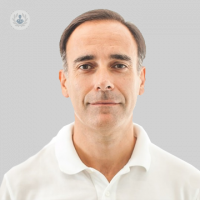Conscious sedation, the solution to the dentist's phobia
Written by:There are people who are afraid and anxious about certain therapeutic or diagnostic procedures, something that is very subjective and that can be difficult to control, complicating the accomplishment of the procedures. In pediatric patients or with some degree of psychic disability it may be of such a magnitude that it is impossible to carry out the procedure or that the techniques of subjection cause greater fear and suffering by developing important phobias such as the phobia of the dentist. In such cases it is important that an anesthetic specialist intervene, who will administer the appropriate drugs so that the procedure can be performed without stress or suffering.

Utilities of conscious sedation
When using conscious sedation:
- It will reduce the level of anxiety of the child, which will positively influence your comfort and subsequent medical experiences.
- It will allow children who have to undergo long or traumatic treatments to have more pleasant experiences.
- It will decrease the level of stress and increase the safety in the treatment with some patients.
- It will reduce the number of medical emergencies, very important in pediatric dentistry.
- It will allow to treat patients with physical or mental conditions more easily.
- Will achieve greater collaboration on the part of the child.
- Avoid nausea, in patients with an excessively sensitive pharyngeal reflex.
- It will serve as an adjunct in the control of pain.
Types of conscious sedation and when it is recommended
According to the type of patient and the type of procedure that the expert in dentistry and stomatology must perform, the anesthesiologist will choose a more or less deep anesthesia. In adult patients without psychic pathologies who have a certain degree of anxiety about dental procedures, superficial sedation may suffice. This means that the patient is awake but with a significant degree of relaxation, which allows him to undergo the procedure and collaborate with the specialist.
In contrast, in pediatric patients, especially those who are very young or suffering from a psychic disability (Autism, Down Syndrome or Cerebral Palsy, among others), deep sedation will be necessary. In this case the patient will be completely asleep. It is somewhat like general anesthesia, with the difference that the patient breathes on his own, as if he were asleep.
Possible risks of conscious sedation and the importance of qualified professionals
The techniques of conscious sedation are not without risks, although they may be reduced if the procedure is carried out by an Anesthesiologist with extensive experience in anesthesia outside the hospital. It is also essential that such a professional should have all the necessary technical means.
Recommendations prior to conscious sedation
It is recommended that patients go to the clinic on an empty stomach, to prevent complications, and are evaluated by the anesthetist before being submitted to the anesthesia itself. Once the intervention is completed and after a safe interval of time, the patient will return home with specific indications.



